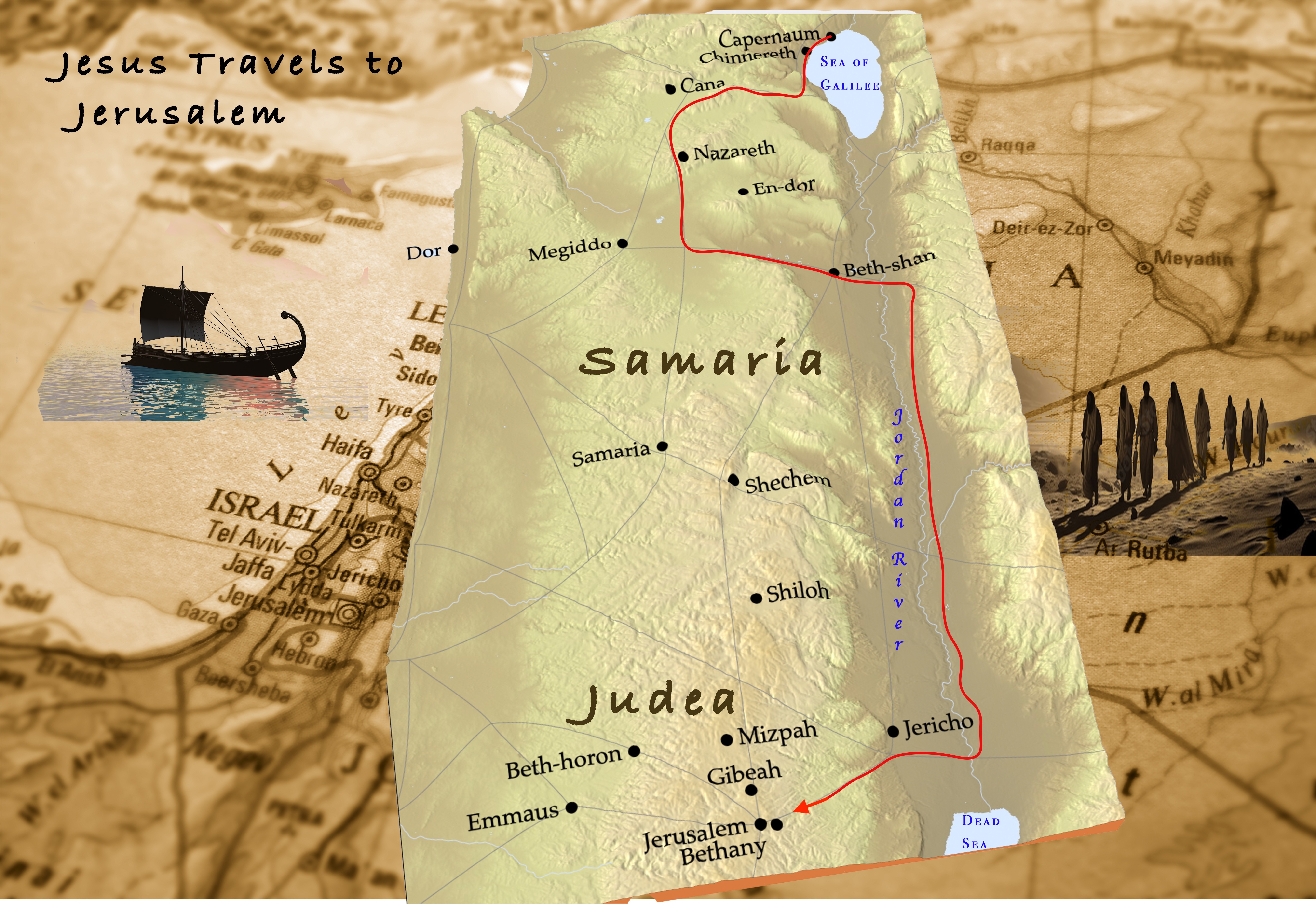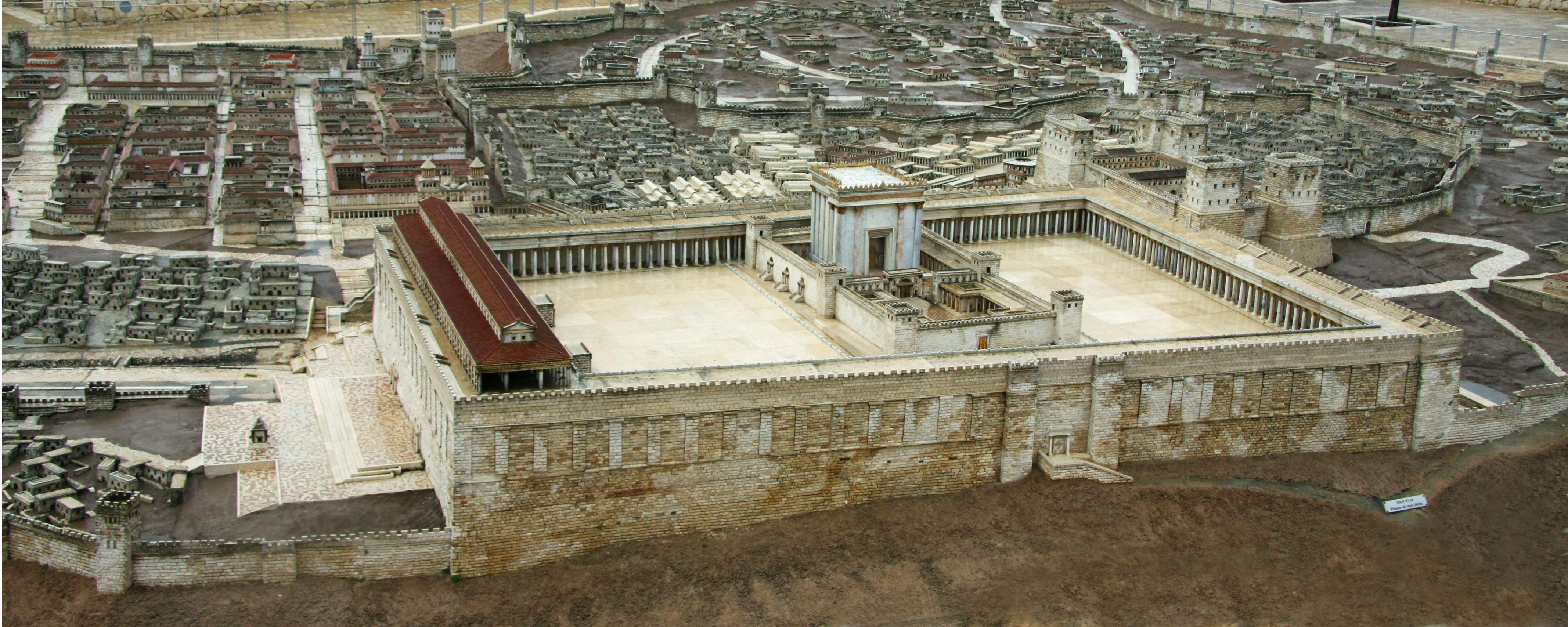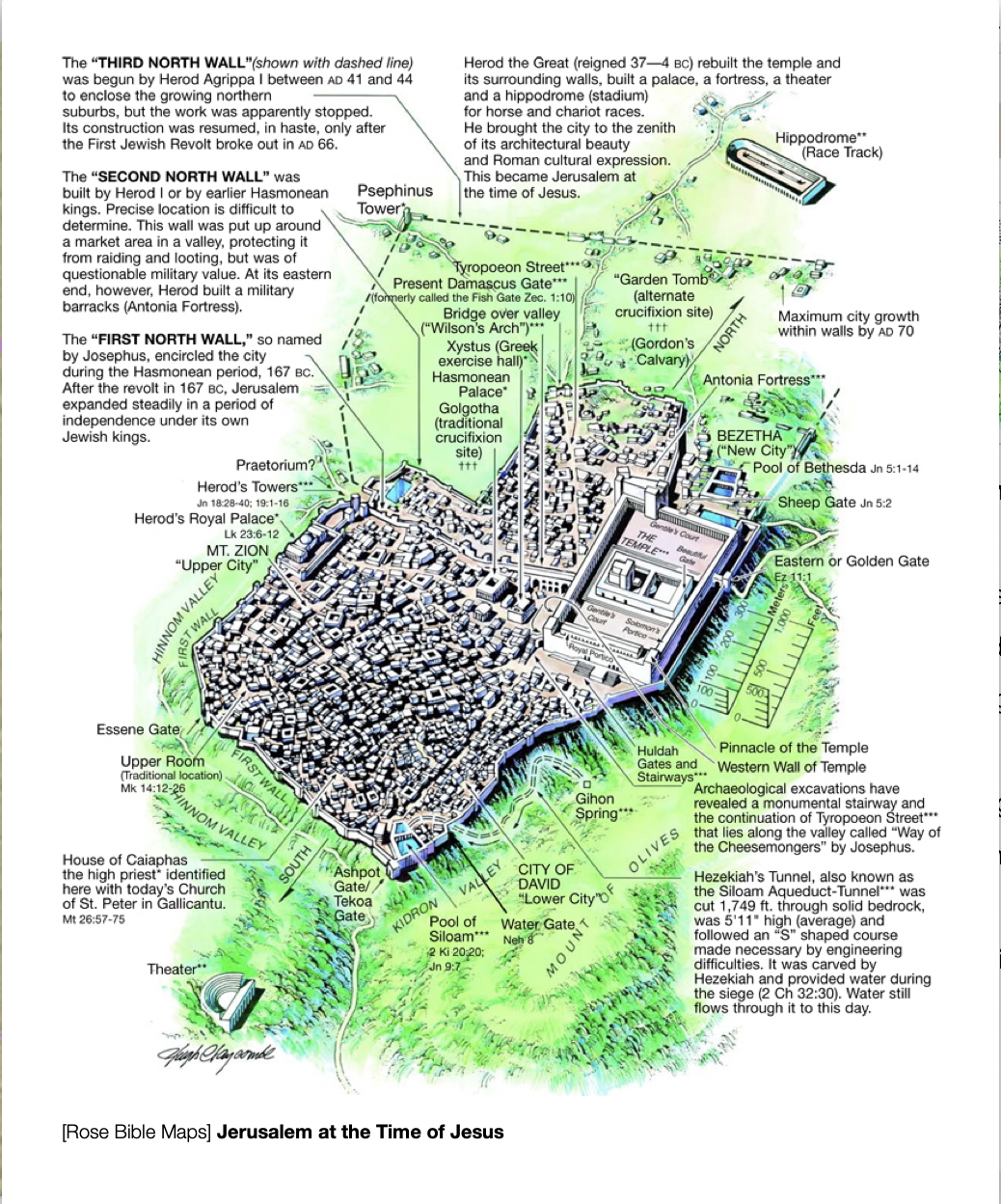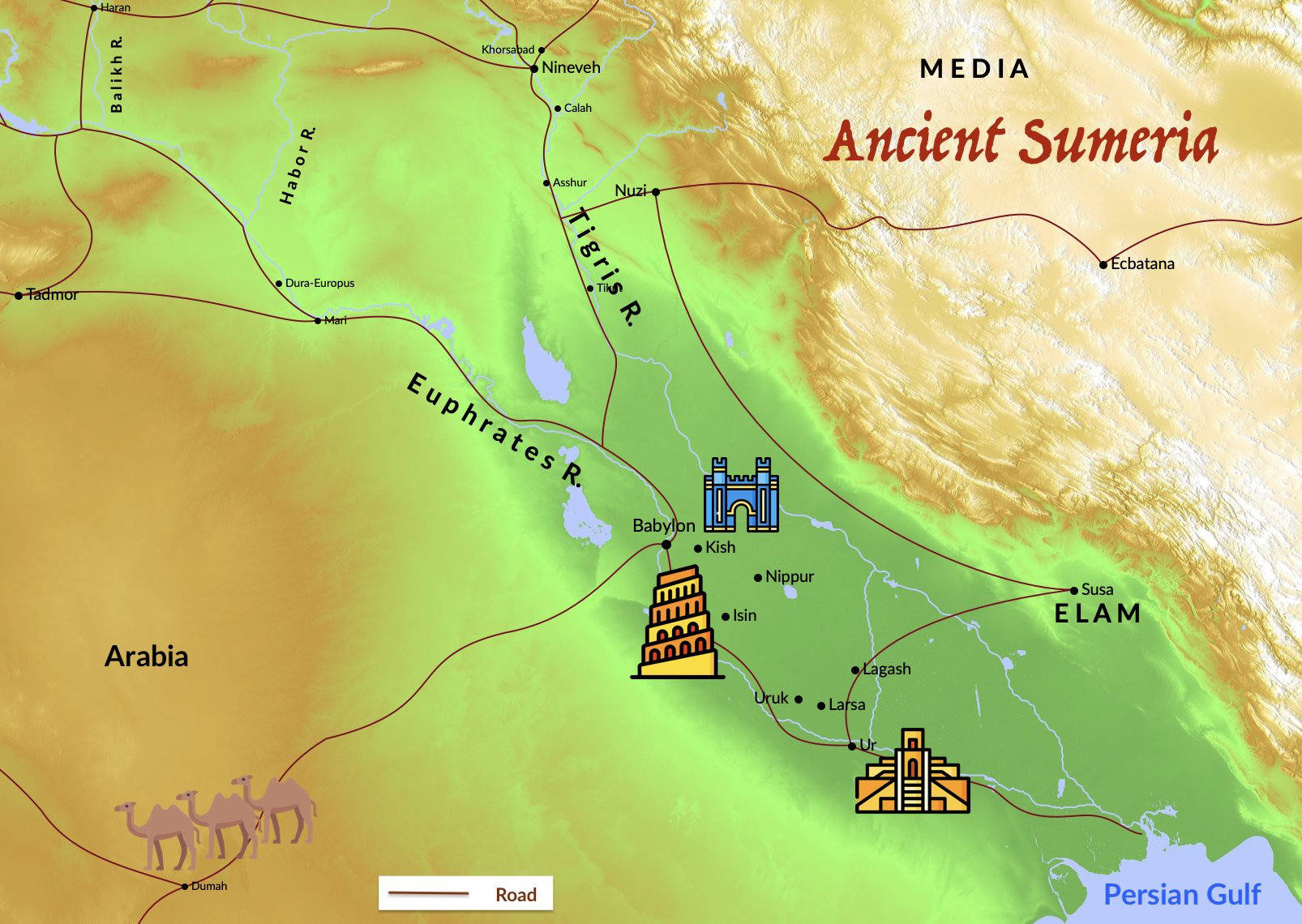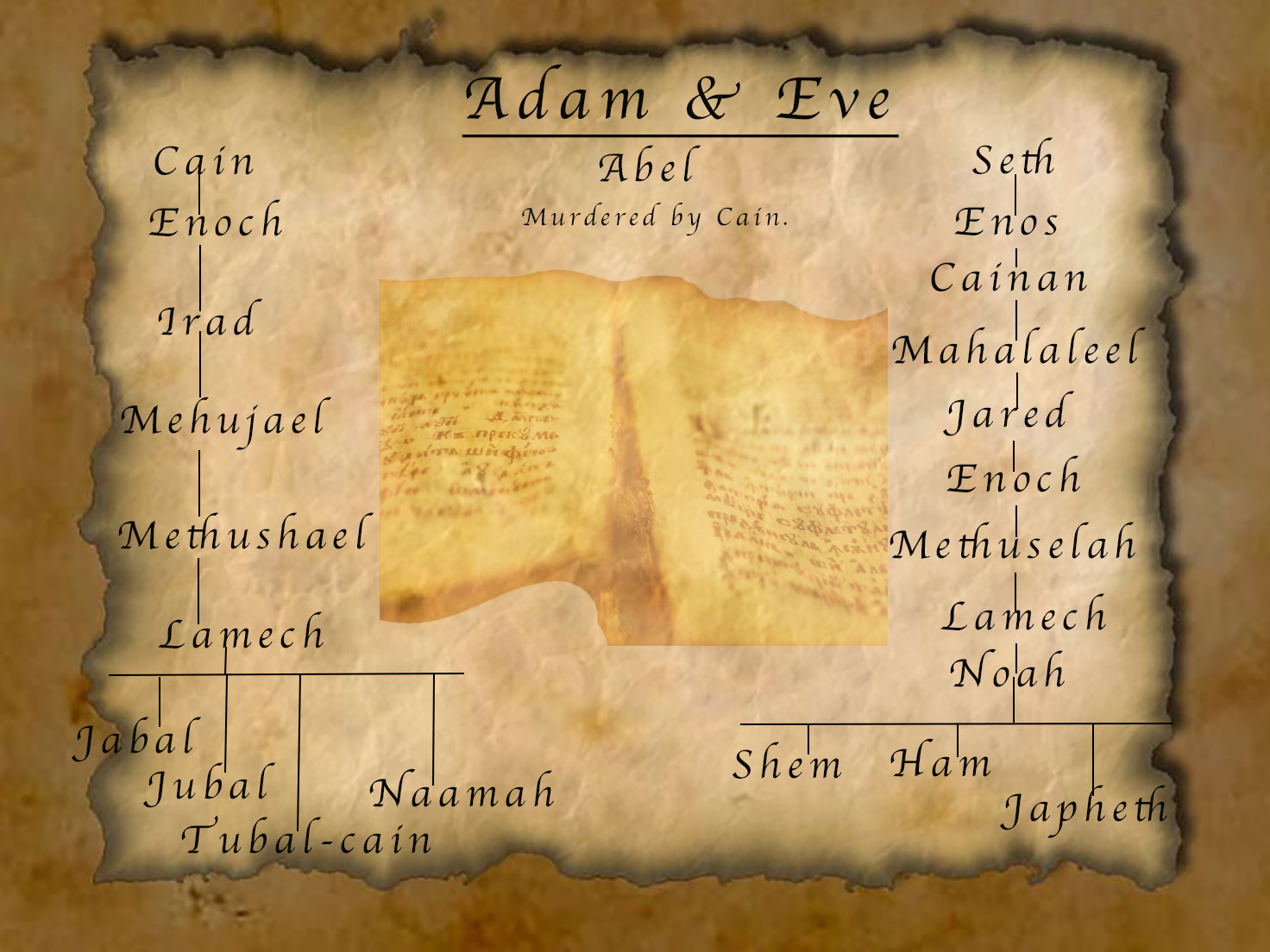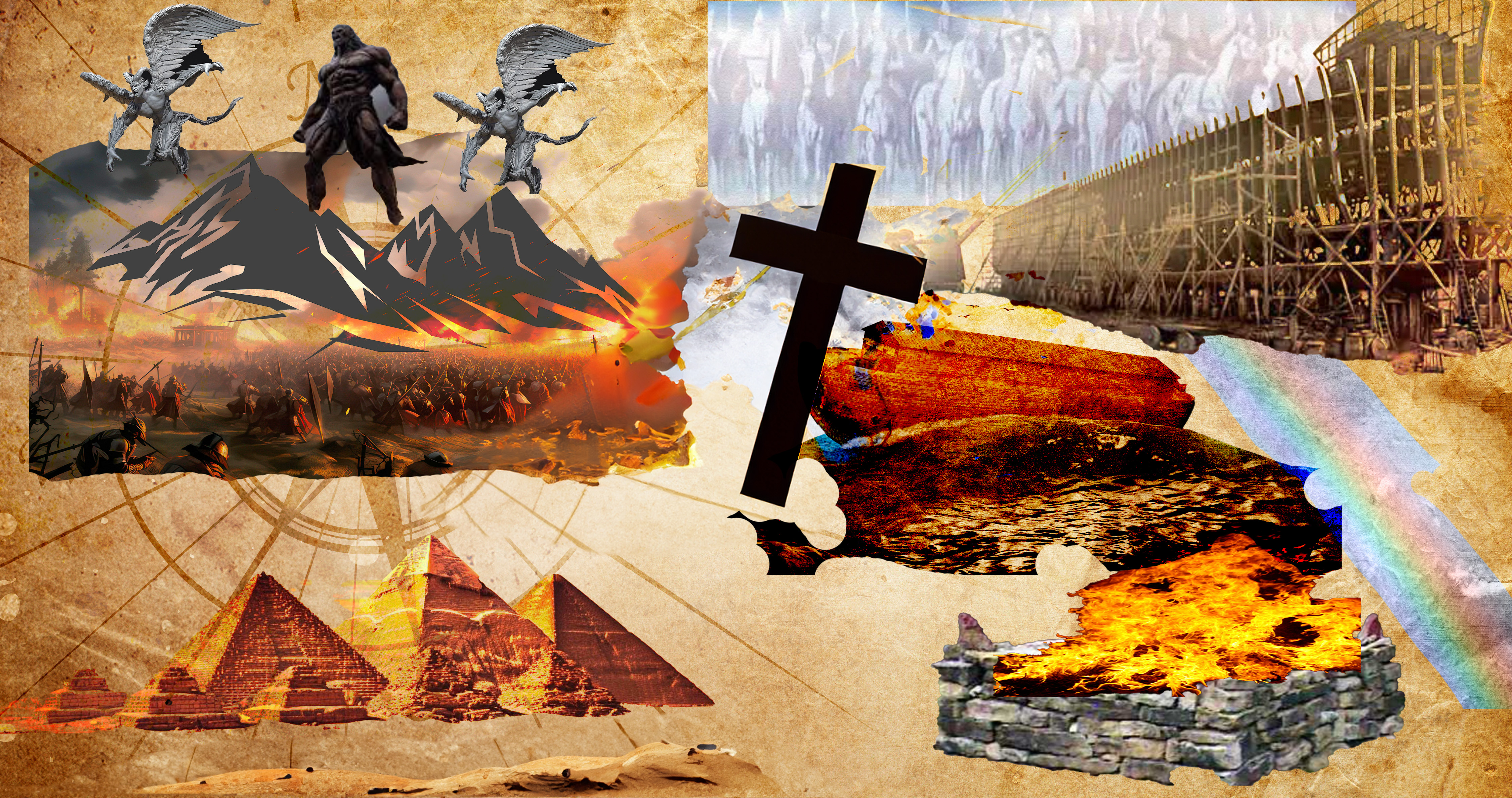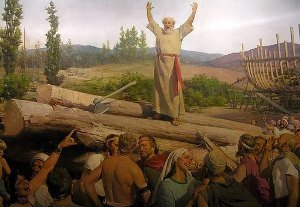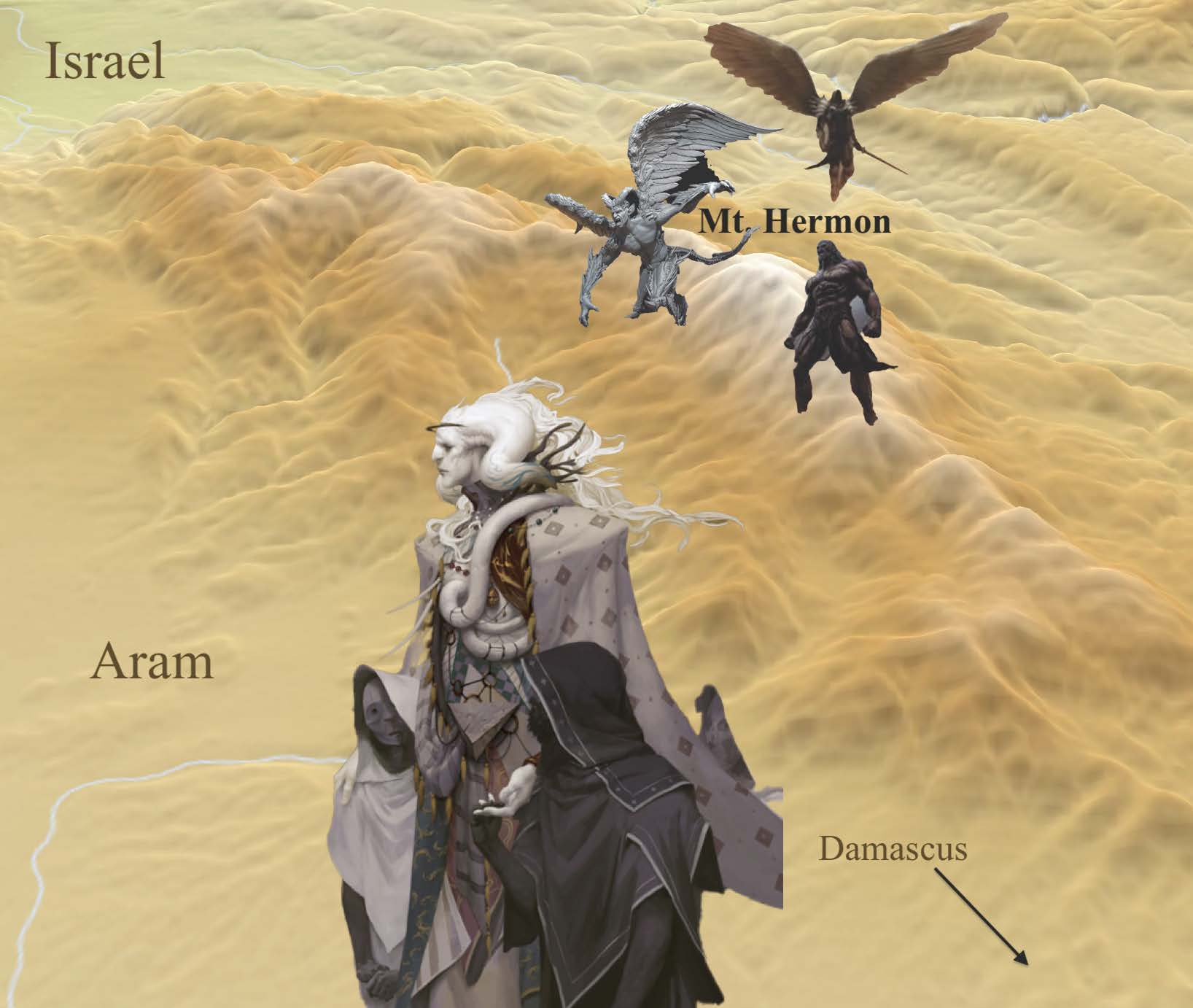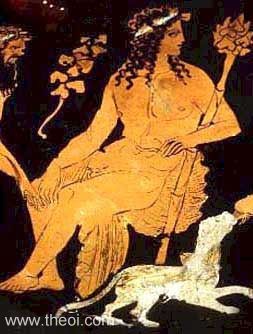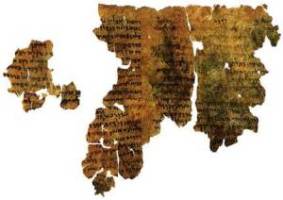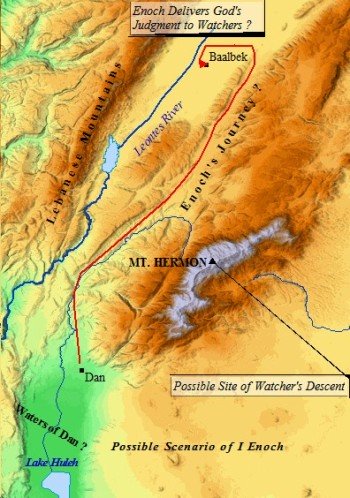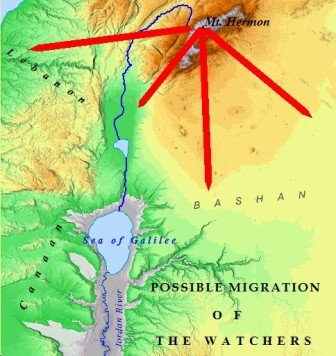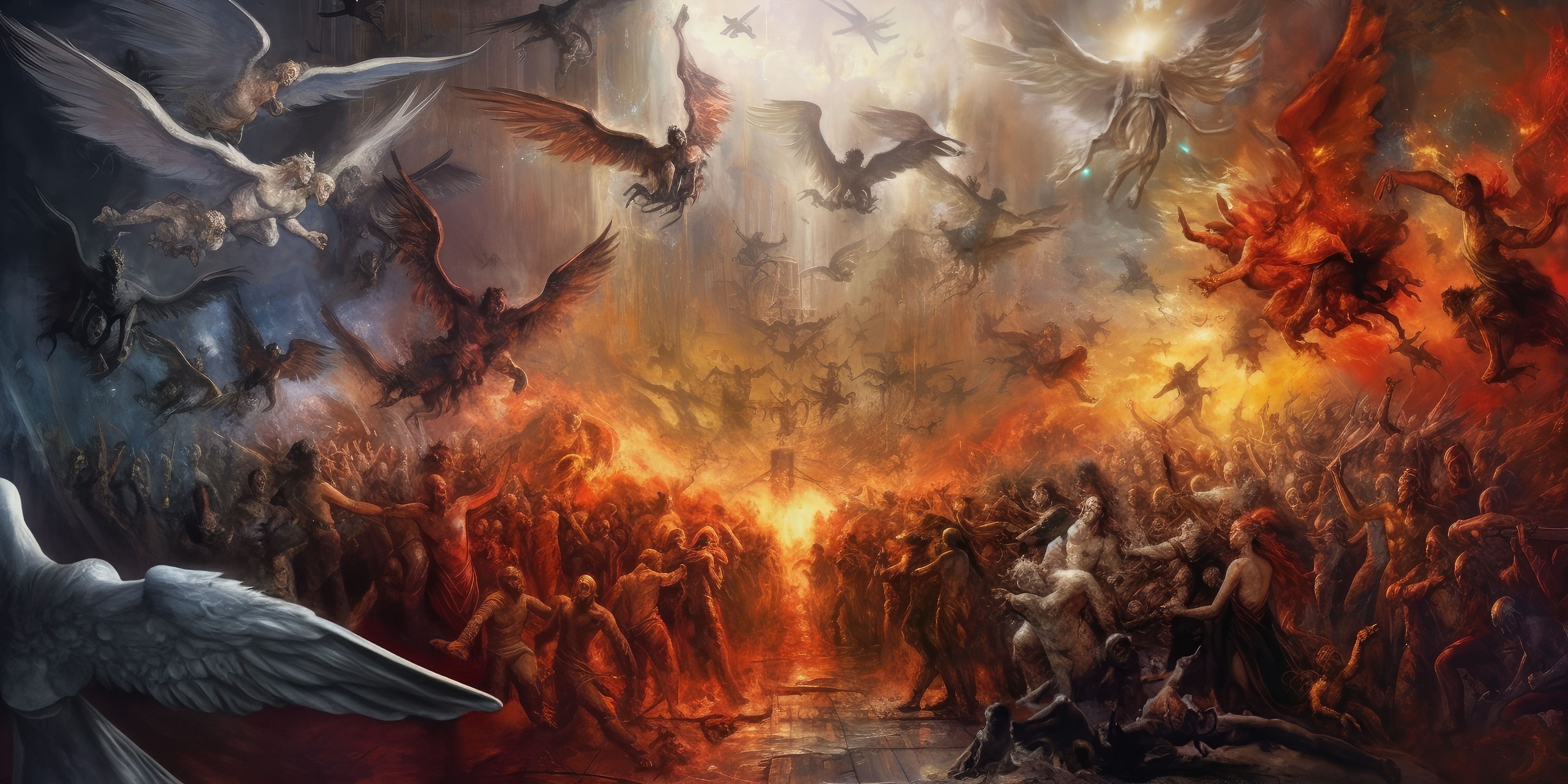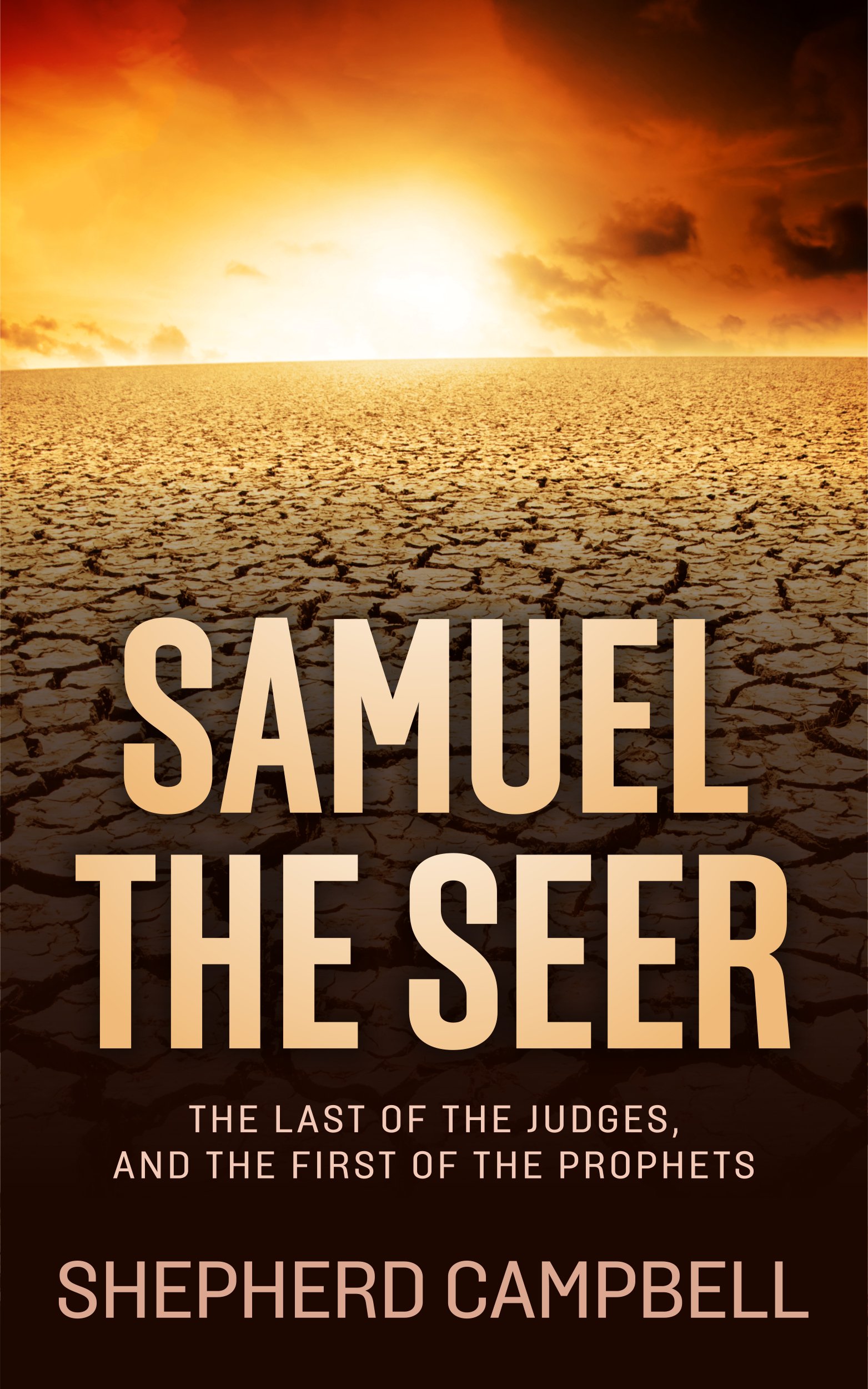- Biblical Maps
- Home Page
- History of Israel Blog
- Ancient Mesopotamia
- Map of Palestine
- Abraham
- Ancient Israel
- 12 Tribes of Israel
- Jerusalem
- The Book of Isaiah
- Palestine
- The Habiru
- Contact Us
- Bible Study Forums
- Media Page
- Visitors Sitemap
- Privacy Policy
- The History of the Old Testament
- In the Days of Noah
- The City of Jericho
VISIT OUR FACEBOOK PAGE!
In the Days of Noah
The days of Noah are some of the most enigmatic and mysterious of the Bible. For it was during the time of Noah that the Flood came - when the deeps burst forth and the portals of heaven were opened and the waters were loosed upon the earth wreaking havoc, destruction and death. What caused the flood? What was going on in the days of Noah that led to such a catastrophic, world-ending event?
The time of Noah is even more important to understand when we consider the words of Jesus in Matthew 24:37, with parallel passages in Mark 13 and Luke 17. In Matthew 24:37 Jesus is leaving the Temple and begins answering questions from his disciples. In v. 37 Jesus states;
For as it was in the days of Noah, so will be the coming of the Son of Man.
What is the coming of the Son of Man? When is the coming of the Son of Man? How does it relate to the days of Noah? Why does Jesus specifically refer to the “days of Noah” as opposed to any other time in history?
The connection Jesus makes between the end of the ages and the days of Noah is a tantalizing connection to one of the most enigmatic and mysterious epochs in earth’s history. Those days are not to be forgotten. In fact, they can shed light on what is to come.
PAGE CONTENTS
The Olivet DiscourseThe Prediluvian Epoch
The Son of Rest
In the days of Noah
bene Elohim
The Sons of God
Imaginings of Evil
Ruined before Godl
THE OLIVET DISCOURSE (Matthew 24:4 - 25:46)(Mark 13)(Luke 17)
The Olivet Discourse is apocalyptic. The setting is sometime in March/April (the month of Nisan) of 33 AD. It is the time of the Jewish Passover, and Jerusalem has swelled to a population between 250,000 to 2 million - depending on estimates.
Jews from all over the known world make the pilgrimage to worship in the great Temple in Jerusalem. It was required by law every Jew present themselves once a year at the Temple. Passover was one of the most sacred of the Jewish festivals.
It commemorated and celebrated Yahweh’s deliverance of the enslaved Hebrews under Pharaoh in the Exodus. Jews from all over the known land would pilgrimage to Jerusalem to celebrate and remember Yahweh’s salvation.
Jesus was no different. He was a good Jew. He and his disciples had left Galilee earlier and made their way to Jerusalem for Passover. They travelled down the eastern side of the Jordan River to avoid traveling through Samaria.
Upon crossing the Jordan River into Judea, Jericho was the first city one would encounter. Jesus and his entourage stayed there for an undetermined amount of time.
Before leaving Jericho on the way up to Jerusalem, Jesus pulled his disciples aside and warned them of the nature of their trip (Matthew 20:17-19). They failed to grasp the gravity of what he had said and did not understand Jesus was going to Jerusalem to be crucified.
Jesus wasted no time in making an impact upon entering Jerusalem. On day one he goes to the Temple and cleans it out - driving the money changers from the precincts in a righteous fit of rage. Already on the authorities watchlist, now Jesus was public enemy #1 to the Establishment.
They would be watching his every move. On the second day, recorded in Matthew 23, Jesus goes right back to the Temple. There, within the Temple confines and well aware of those watching him, Jesus spent an entire day preaching, teaching and exchanging verbal glances with the Pharisees and Sadducees.
In chapter 24 Jesus is leaving the Temple, tired one can imagine after a long day of teaching and debating. His disciples come to him as he is leaving the precincts with great pride in their magnificent Temple compound.
“Look, Teacher, what wonderful stones and what wonderful buildings!”
One cannot blame a first century Jew for taking great pride in their temple. King Herod had invested massive sums of gold and silver in its construction and beautification.
Herod had significantly increased the size and scope of King Solomon’s first temple and the Second Temple rebuilt during the days of Ezra and Nehemiah. Herod’s Temple was a magnanimous architectural feat by any means.
Jesus was quick to bring things into context. One can imagine him stopping and looking at the temple and the people scurrying about - tens of thousands of people, throngs of people moving in and out of the temple precincts. Looking at his disciples Jesus flatly states:
“Do you see these great buildings? There will not be left here one stone upon another that will not be thrown down.” (Mark 13:1-2)
Later his disciples ask him when those things will take place. Sitting on the Mt. of Olives looking down on the Temple compound across the valley, Christ launches into a discourse on the signs of the end of the age.
Jesus tells them they will hear of wars and rumors of wars. There will be earthquakes, and famines, and nations rising against nations all across the globe, all happening simultaneously. But that is just the beginning.
While much is said in these verses by Jesus, it is in Matthew 24:36 that Jesus connects the days of Noah with the coming of the end of the age. Keep in mind any reference to “that day”, or, “in that day”, or, “the day of the Lord” is a reference to the apocalypse, otherwise known as the seven year tribulation.
“But concerning that day and hour no one knows, not even the angels of heaven, nor the Son, but the Father only. For as were the days of Noah, so will be the coming of the Son of Man. For as in those days before the flood they were eating and drinking, marrying and giving in marriage, until the day when Noah entered the ark, and they were unaware until the flood came and swept them all away, so will be the coming of the Son of Man.” (Mt. 24:36-39)(Lk. 17:26-27)
Jesus’ statement is odd. His focus on the days of Noah particularly raises questions. People have been eating and drinking, marrying and giving in marriage, since Adam and Eve. All people in all ages and all places have been doing those very things. What does Jesus mean by this statement?
In that day, Jesus is saying, God will not be on the minds and hearts of people. Consequently, they will not see him coming. The implication behind Jesus’ comments are people will be unaware of the end when it comes.
People will be so self-absorbed in their own lives they will not be paying attention to the culture and geopolitics around them.
In this regard, today is no different than the days of Noah. The same could be said for the roaring ‘20s, the Summer of Love in ’69, or the great disco era of the 1970s. People have been doing their own thing since we left the Garden and settled in Sodom and Gomorrah.
In the Western world society has steadily eliminated God from culture. No prayer in school, before contests, at parades, or anywhere for that matter. No more plaques of the Ten Commandments.
Absolute separation of Church and State - but only for Christianity. Humanity is doing our own thing more so today than any generation before us. We are oblivious to the supernatural and spiritual realm.
So, are we in the end days? How are we different than centuries past? Why did Jesus bring the days of Noah into the equation in the Olivet Discourse?
The Prediluvian Epoch
In order to answer those questions one must journey back in the days of Noah as recorded by Scripture in the early parts of Genesis. These were the prediluvian (pre-flood) days of humanity - impossible to date with any accuracy.
Genesis 1-11 qualifies as “prehistory” for we do not know the dates of when these events transpired. Recorded history starts with the the Sumerians of ancient Sumeria, located in modern day Iraq and Kuwait.
The earliest evidence of their existence dates back to circa 3000 BC. Abraham and Lot journeyed to Canaan from Ur, located in Sumeria.
Anything that happened prior to 3000 BC must be considered prehistory simply because very little-to-nothing is known of the peoples and nations of that bygone era. Thus, the days of Noah most certainly happened sometime in the epoch(s) prior to 3000 BC.
Genesis 5
Genesis 5 is “the book of the generations of Adam”. Starting with Adam, this chapter lists a ten person genealogy of the pre flood era from the lineage of Seth. This genealogy tracks the progression of God’s Word from the Garden into the earliest traces of human history.
Each Patriarch would have been entrusted with passing the story of Yahweh onto the next generation. One immediately notices the lifespans of these ten ancient Patriarchs are exceedingly long - much longer than current lifespans in our world today.
It is interesting to note the many connections between the early chapters of Genesis and the ancient texts of the Sumerians. The creation and flood narratives have striking similarities. Another such connection is the longevity of life as described by these ancient texts.
While the Biblical lifespans lasted hundreds of years, the lifespans of the ancient kings of Sumeria lasted tens of thousands of years in many cases.
Seth, the son of Adam who replaced Abel as the transmitter of the seed of the woman, lived to be 912 years old. Enosh, Seth’s son, lived to be 905. Enoch, the seventh from Adam, only lived to be 365 years of age.
Why? Because the prophet Enoch “walked with God, and he was not, for God took him”, becoming one of only two people in the Bible to never taste death. Enoch had much to do with events in the days of Noah.
Enoch fathered Methuselah, who would become the world’s oldest living person in history dying at the age of 969. In the generations leading up to the days of Noah there seems to have been two major influencers - Enoch and Methuselah.
Methuselah would father Lamech, who would father a son as well. Methuselah becomes one of the last great Patriarchs of prehistory.
His long life most certainly contributed greatly to the preservation of the seed of the woman (Genesis 3) through the word of the LORD. Methuselah’s influence would have provided a foundation for humanity to build on in preparation for Yahweh’s next big move.
the Son of Rest
נחַ Noach
rest, comfort
In the days leading up to Noah’s birth it would seem things had gotten difficult for humanity, especially for those devoted to Yahweh. Scripture does not reveal much detail about these days. In Genesis 5:28-32 Lamech, the son of Methuselah, gives birth to a son he names Noah.
“When Lamech had lived 182 years, he fathered a son and called his name Noah, saying, ‘Out of the ground that the Lord has cursed, this one shall bring us relief from our work and from the painful toil of our hands.”
Noach, Hebrew for Noah, is a word that means ‘rest’. It is similar in sound to the Hebrew word for ‘comfort’, or ‘relief’. An alternative translation of 5:29 reads:
“…called his name Noah (rest), saying, ‘This one will bring us comfort from our work and from the sorrow of our hands, from the ground which the Lord cursed.’ “
There is a pun on words in the verse describing Noah’s birth and name. Noah’s name meant rest, and his life would be one which brought comfort to his people. Bray & Hobbins brilliantly portray a similar usage in English;
“And he called his name Fierce, saying, ‘This one will be fearsome against our enemies.” (Bray & Hobbins, Genesis 1-11, 146.)
Noah’s name was ‘rest’, and he would bring his people ‘comfort’. Nothing could have been further from the truth. Security and peace were scarce in the day of Noah. Bloodshed and perversion reigned.
Noah’s brith was a divine birth. The days of Noah were marked as being significant not after Noah’s life - as some form of memorial - nor were they marked by certain great acts and achievements of Noah over the course of his life.
The days of Noah were marked by his very birth. This was a pivotal birth in the history of humanity. The very epoch of time known as the pre flood era is not defined by Adam, or Seth, or even Enoch - but Noah.
Noah is the main character for the main event - the Great Flood. This is the man upon whom the hope of his ancestors rested. His birth was a significant moment in time.
Lamech understood the birth of his son was a prophetic birth. Why did Lamech feel such? We are not told why, but it is clear the people of Yahweh were looking for a deliverer in the days of Noah. Noah’s birth came at a significant time in the history of God’s people.
It is very likely in the overall context of those days, Noah’s birth went unnoticed by society as a whole. It was recognized only by the family and people of Yahweh.
The followers of the one true God in these early years all come from one big family. This family follows the seed of the woman from Genesis 3, and finds its origin with Adam and Eve in the Garden of Eden. What is the “seed of the woman”?
The “seed of the woman” is a bloodline extending from Adam and Eve and running through Seth. When Yahweh issues the three curses to the three participants after the fall, he differentiates between the offspring of the serpent and the offspring, or seed, of the woman. The curse to the serpent is levied in Gen. 3:15;
“and I will put enmity between thee and the woman, and between thy seed and her seed: he shall bruise thy head, and thou shalt bruise his heel.”
Since this pronouncement there have been two competing bloodlines on earth. One follows after the spirit of the the serpent, the other after the spirit of the woman. In the days of Noah the seed of the serpent had gained momentum.
The two lines were to be in a constant state of conflict, and remain so to this very day. These are the forces of good and evil.
Genesis 3:15 was the first Messianic prophecy in the Bible and it predicts the ultimate fall of the serpent and those that follow after its ways. From the seed of the woman would emerge the bloodline eventually leading to Messiah, the snake crusher.
Noah was a part of this bloodline, as he was the 10th listed in Genesis from Adam. Perhaps as the son of rest and comfort he would bring an end to the wickedness that had so permeated the earth. In the days of Noah, the hope of his people rested on him.
Thus far, in the days of Noah there were two competing bloodlines; an unfulfilled prophecy from the long lost Garden; a lineage of long living patriarchs to carry the prophecy through the generations; and the proliferation of evil and wickedness unlike ever before. The days of Noah were steeped in prophetic anticipation.
Lamech saw his son, Noah, as the one who would give rest to his people - undoubtedly a belief underpinned by messianic expectations. Perhaps Lamech had the Genesis 3 prophecy in mind when he named Noah - believing Noah may have been the snake crusher.
Noah, consequently, is very much a messianic figure. Noah becomes a foreshadowing of the one, true Messiah, the one who will permanently crush the head of the snake - Jesus Christ.
In the Days of Noah
The most in-depth description in the Bible of what life was like in the days of Noah can be found in Genesis 6. Genesis 6 depicts life on earth in the time immediately preceding the biblical flood.
In fact, it is the events of Genesis 6 which leads Yahweh to pronounce judgement upon the earth and all of its inhabitants - save one.
Genesis 6:1-4
When man began to multiply on the face of the land and daughters were born to them,
Genesis 6:2 the sons of God saw that the daughters of man were attractive. And they took as their wives any they chose.
Genesis 6:3 Then the LORD said, “My Spirit shall not abide in man forever, for he is flesh: his days shall be 120 years.”
Genesis 6:4 The Nephilim were on the earth in those days, and also afterward, when the sons of God came in to the daughters of man and they bore children to them. These were the mighty men who were of old, the men of renown.
These are some of, if not the most, marginalized passages in the Bible. Pastors and theologians avoid these verses like the plague. Why?
Because, if taken at face value, these passages suggest something incomprehensible to our modern sensitivities and understanding. To acknowledge fallen angels reproduced with human women and produced giant half-divine beings is, in many ways, to rewrite all of human history.
These events in Genesis 6:1-4 precipitate an outbreak of evil in the days of Noah never seen before, according to verse 5. Verse 5 reads;
“The LORD saw that the wickedness of man was great in the earth, and that every intention of the thoughts of his heart was only evil continually.”
What was going on in the days of Noah? The answer is debatable, even shocking - but when the Bible is taken at face value, unavoidable. The controversy surrounding Genesis 6 rests on the identity of the “sons of God”.
While many interpretations exist, the most popular in conventional circles is known as the Sethitic Interpretation. In short, this theory focuses on the human descendants of Seth and Cain.
Seth was the son born to Adam and Eve after Cain murdered Abel. During the days of Seth we learn men “began to call upon the name of the LORD” (Genesis 4:26). Seth was a godly man, and his lineage followed the promised seed of the woman. They were meant to remain holy and dedicated to Yahweh as his own people.
The line of Cain followed the other bloodline - that of the serpent. According to this theory, Genesis 6 describes the unholy marriage of the line of Seth with the line of Cain.
In this theory, godly men from the line of Seth intermarry with women from the wicked line of Cain. The intermarrying of the two bloodlines would corrupt the line of Seth, thus thwart Yahweh’s plan to eventually produce a savior from the pure Adamic bloodline. The intermarrying was so wicked it led to the ultimate destruction of the earth and all upon it.
There are a number of problems with this interpretation, foremost of which is the names “Seth” and “Cain” are nowhere to be found in Genesis 6:1-4. There is no actual link in the passage to Cain. And the only link to Seth, who is also not mentioned in the passage, is through the lineage of Noah.
Thus interpreting these verses as representing descendants from those two lineages is reading something into the biblical text that simply is not there. The entire Sethitic Interpretation is read into the passage. Nowhere does Genesis 6 indicate that is what happened.
It is always best to start with what the Bible actually says. But, what does the Bible actually say?
bene Elohim
The key to unlocking the events in the days of Noah is hidden in the phrase translated, “sons of God”. The Hebrew phrase used in Genesis 6:2 is “beni-haelohim”. Below is the phrase in Hebrew:
בְנֵי־הָֽאֱלֹהִים
(Elohim) (Ben / Beni)
The phrase literally translates into English as, “sons of the god”. It is important to note that the Bible uses the same word for the pagan god as it does for the Hebrew God - Elohim. Which deity is meant is often clear in the context of the usage.
However, sometimes the Hebrew definite article, ‘ha’ (the), is attached to elohim, as is the case in Genesis 6. In the above Hebrew this article is highlighted in red font. This phrase literally reads as, ‘the gods’, or ‘the God’.
Anytime the article ‘the’ is used it clearly represents Yahweh. While there may be many gods, there is only one that is THE GOD. So, in Genesis 6:2 the “the” is dropped, the lowercase ‘g’ is capitalized, and the result is the Hebrew phrase stands for the one, true God of the Universe.
Below is a word-for-word breakdown of the phrase.
sons = בְנֵי
the (article) = הָֽ
god: in this case, capital G ‘God’ = אֱלֹהִים
Thus the literal translation is “sons of the God”. As stated above, it is understood the definite article refers to Yahweh, so “the” is dropped and written as capital ‘G’, “God”. Consequently, when taken at face value the sons of God is referencing sons of Yahweh, thus divine beings.
Are these angels? Can we find other references using the same phrase, bene Elohim, which paint a clearer picture of their identity?
Just what in the world was going on in the days of Noah?
The Sons of God
In fact there are several other passages which use this exact phrase, or a very close derivative of it.
Here is the phrase in Hebrew from Genesis 6.
בְנֵי־הָֽאֱלֹהִים
1. Job 1:6
בְּנֵ֣י הָאֱלֹהִ֔ים
Now there was a day when the sons of God came to present themselves before the LORD, and Satan also came among them.
2. Job 2:1
בְּנֵ֣י הָֽאֱלֹהִ֔ים
Again, there was a day when the sons of God came to present themselves before the LORD, and Satan also came among them to present himself before the LORD.
3. Job 38:7
בְּנֵ֥י אֱלֹהִֽים
When the morning stars sang together And all the sons of God shouted for joy?
4. Psalm 29:1
בְּנֵ֣י אֵלִ֑ים
Ascribe to the LORD, sons of the mighty, Ascribe to the LORD glory and strength.
5. Psalm 82:6
בְנֵ֖י עֶלְי֣וֹן / אֱלֹהִ֣ים
I said, “You are gods, And all of you are sons of the Most High.
6. Psalm 89:6
בִּבְנֵ֥י אֵלִים
For who in the skies is comparable to the LORD? Who among the sons of the mighty is like the LORD,
7. Daniel 3:25
לְבַר־אֱלָהִֽין
He responded, “Look! I see four men untied and walking about in the middle of the fire unharmed, and the appearance of the fourth is like a son of the gods!”
The context of this phrase in each of the seven passages above examples is that of an angel. A son of the gods, or, sons of God, or, the sons of the mighty, or sons of the Most High, clearly indicates angels, or at least divine beings of some type dwelling in heaven with Yahweh.
While there is some debate on the translation of Psalm 82:6, the debate rests on the same issue - the identity of sons of the Most High as either angels or Israelites.
When taken together as a whole there is very little doubt the phrase sons of God refers to angels. If not angels, then at the very least divine beings of some type. At face value, thus, Genesis 6 appears to describe a group of angels that descended to the earth and procreated with women.
These fallen angels, called Watchers in the book of Daniel and the Enochian tradition, produced offspring with women called Nephilim. The Nephilim bloodlines extend into the time of Abraham and Moses. These clans were known as the Rephaim and Zamzummin, and perhaps even the Philistines.
The Nephilim were half-divine and half-human beings that were the “mighty men of old, the men of name.” They were also said to be giants. The phrase “men of name” is translated in most cases as “men of renown”, or, “men of old.
The effects of this unholy union upon the earth were catastrophic.
Imaginings of Evil
The opening chapters of Genesis 6 describe the state of the world in the days of Noah. The appearance of the Nephilim giants in verse 5, whatever their identity may be, seems to usher in a period of evil and wickedness like never seen before on earth.
Genesis 6:5 reads;
The LORD saw that the wickedness of man was great in the earth, and that every intention of the thoughts of his heart was only evil continually. (ESV)
Evil and wickedness prevailed upon the earth in the days of Noah. But once again we are left with the question as to how bad was it, really? What was so bad in the days of Noah that made Yahweh take such drastic action as he did with the flood?
Were things more evil and wicked then than now? It is hard to imagine a world of more evil and wickedness than today. Unless, that is, a group of angels descended and started wreaking divine havoc on the earth and humanity.
The Bible is frustratingly vague and ambiguous about what the precise nature of evil and wickedness was during the days of Noah. However, where the Bible is nondescript, the Book of Enoch picks up the trail and fills in the details.
The controversial Book of Enoch, left out of the Western canon, but included in some Christian Bibles, is said to have been written by Enoch. The book spends much of its time on the fallen Watchers, providing ample detail where Genesis 6 is vague.
Enoch unquestionably presents a supernatural event in which 200 angels, under the leadership of the angelic Watcher Semyaza, descended from heaven and landed upon Mt. Hermon.
The book of Enoch lays out the fallen Watcher's motivation;
1And it came to pass when the children of men had multiplied that in those days were born to them beautiful and fair daughters. 2 And the angels, the sons of heaven, saw and lusted after them, and said to one another: 'Come, let us choose us wives from among the children of men
This section in Enoch reads almost verbatim like the opening verses of Genesis 6. Enoch states the sons of God descended in the days of Jared. Jared was Noah’s great-great-grandfather and died at 962, when Noah was 366 by some accounts.
The book of Enoch portrays these fallen Watchers as teaching humanity certain forbidden knowledge. In the days of Noah the Watchers and their degenerate Nephilim offspring had been wreaking havoc upon the earth for centuries.
The days of Noah were marked, in part, by the human abuse of a divine and forbidden knowledge not intended for our consumption, given us by angels that had transgressed Yahweh’s ordained boundaries, who also created a living entity outside of Yahweh’s ordained creation, and were laying waste to the earth.
Each of these instances by itself is a a reason to destroy the earth, much less when taken together as a whole. Things were bad, really bad.
And, in fact, this is what Enoch describes.
“…and they taught them sorcery[xvi] and enchantments, and the cutting of roots, and made them acquainted with plants.”
Johnson, Ken (2012-11-13T22:58:59.000). Ancient Book of Enoch . Unknown. Kindle Edition.
Azazel, another of the fallen Watchers, taught men how to make weapons of war and utilize them. He taught women how to seduce men, which consequently “led them astray into fornication and ungodliness and they became corrupt in all their ways”.
Semyaza, the leader of the fallen, and others of his cohort taught humanity enchantments, astrology, the constellations, and other knowledge from the heavens.
The book of Enoch names each of the Watchers responsible for the further corruption of humanity. Fornication, corruption, bloodshed and idolatry reined unchecked on earth.
In the days of Noah this evil had been on-going for likely hundreds of years. The earth was beyond repair. Genesis 6:5 reads;
Then the LORD saw that the wickedness of mankind was great on the earth, and that every INTENT of the thoughts of their hearts was only evil continually.
An alternative interpretation of Genesis 1-11 by Samuel L. Bray and John F. Hobbins has some interesting insight into this verse centered on the word translated as “intent”. They interpret v. 5 as follows:
And the LORD saw that the evil of man was great on the earth, and every IMAGINING of the thoughts of his heart was only evil all day long.
The word variously translated as “intent”, or, “imagining”, or, “inclination” is the Hebrew word Yasar; to form, fashion, shape, create. It is related to Yatzar, the Hebrew word used in Genesis 2:7 where the Lord “formed” the man from the dust of the ground.
The implication is every thought formed by man was evil. Every imagining was pure wickedness. Man was incapable of forming good as only evil was produced out of the heart.
This notion stands in stark contrast to the popular worldly concept of man being essentially good at heart. The biblical concept of man’s inherently evil inclination comes into focus with v. 5.
Bray & Hobbins make the point that Jewish interpretation traces back to this verse the concept of the evil inclination of man’s heart. Man, in this fallen world, is not essentially good at heart - but our true state has been corrupted to the point where evil reigns continually.
We see the development of this concept throughout the Bible (Psalm 14:1-3, Ecclesiastes 7:20, Romans 3:10-12). The NJPS paraphrases, “every plan devised by his mind was nothing but evil all the time”.
The book of Jubiless has this to say about the days of Noah;
21 Because of these three things came the flood on the earth, namely, the fornication that the Watchers committed against the law of their ordinances when they went whoring after the daughters of men, and took themselves wives of all they chose, and they made the beginning of uncleanness. 22 And they begat sons, the Naphilim (Naphidim), and they were all dissimilar, and they devoured one another, and the Giants killed the Naphil, and the Naphil killed the Eljo, and the Eljo killed mankind, and one man killed another. 23 Every one committed himself to crime and injustice and to shed much blood, and the earth was filled with sin.
Extreme proliferation of sin and evil ran unchecked upon the earth in the days of Noah. In fact, the continued proliferation of evil among humanity is credited as originating in the days of Noah.
Modern Christian dogma attributes all sin and all consequences of sin to the transgression of Adam and Eve in the Garden. However, this has not always been the case.
Dr. Michael Heiser points out that in the eyes of Second Temple Judaism the proliferation of evil and wickedness was believed to have been a result of the sin of the Watchers in Genesis 6.
The writers of the New Testament quoted Enoch (Jude). They believed the Genesis 6 narrative meant what it said. They had a very supernatural world view and cosmology.
Whereas man discovered his inclination to disobey God in the Garden of Eden, that inclination was not fully acted upon and explored until the sin of the Watchers and their evil, wicked influence upon mankind.
The Second Temple Period Jew attributed the explosion of evil to the sin of the Watchers, and believed it was these events which triggered the Flood itself.
Evidence for this concept is found in the simple arrangement of the text. Genesis 7 is the Great Flood. Genesis 6 describes the events leading up to the flood, thus the events which caused the flood.
While sin persisted outside of the Garden, we do not hear of Yahweh destroying the earth as a result. Even when Cain murders his brother Abel, Yahweh does not destroy the earth.
But with the sin of the Watchers a new evil had surfaced. Sin was proliferating on the face of the earth as never before. The hidden knowledge given mankind had exploded in man’s hands, like a lit firecracker held in a tight fist.
The petulant, giant, Nephilim offspring wrought death, bloodshed and destruction on epic levels not only in the days of Noah, but in the centuries leading up to that time. In addition, the Nephilim mysteriously return in the book of Numbers once again wreaking havoc.
4 The giants consumed all the work and toil of men. And when men could no longer sustain them, the giants turned against them and devoured mankind. 5 And they began to sin against birds, and beasts, and reptiles, and fish, and to devour one another's flesh, and drank the blood. (Book of Enoch)
The unholy union of fallen angels and human women produced an unholy & demonic offspring Yahweh had never intended to exist. The whole balance of earth and nature had been overthrown.
New creatures crept upon the earth - devouring and destroying the earth and everything upon it. The seed of the serpent was gleefully manufacturing chaos, death and destruction.
New knowledge corrupted hapless humanity, who used their newfound knowledge for evil. Bloodshed erupted with war using novel weapons invented with the knowledge taught by the Watchers.
Sexual sin, perversion and immorality exploded with the onset of heightened beauty, coupled with the newly discovered art of seduction. Men and women explored each other like never before.
New sins and new evils took root and flourished in the hearts of mankind. God’s creation had been ruined.
Ruined before God
Verses 11-13 portray Yahweh’s perception of things on earth, and his thought process as to how it must be handled. There are a couple of nuanced layers to Genesis 6:11-13 that the English translations fail to pick up.
Now the earth was corrupt in God’s sight, and the earth was filled with violence. And God saw the earth, and behold, it was corrupt, for all flesh had corrupted their way on the earth. And God said to Noah, “I have determined to make an end of all flesh, for the earth is filled with violence through them. Behold, I will destroy them with the earth.
The Hebrew שָּׁחֵ֥ת is used 4 times in verses 11-13. The Hebrew šāḥaṯ means; to be corrupt, to decay, be ruined, be marred. It is the same Hebrew word used in each instance, yet, the word is translated two different ways in v. 13.
The discrepancy is not noticed in English. In v. 13 sahat appears twice. In the first instance it is translated as “corrupt”. In the second occurrence it is translated as “destroy”.
The English version makes sense and does not necessarily hide the true meaning. It makes sense God would destroy humanity given the depraved state of things. Fallen angels, half-divine offspring, forbidden knowledge, and pervasive evil certainly justifies destruction.
However, some nuance is lost. Why use a different translation on the same Hebrew word just a few sentences before was translated as something altogether different. Corrupt is not the same as destroy.
The earth was corrupt, yet God destroys it along with humanity. This appears somewhat inconsistent and touches on our earlier questions. What made this “corruption” so much greater than past (and future) “corruption” to the point of annihilation? What is the Hebrew trying to tell us?
Bray & Hobbins provide an alternative translation to these verses. They take the Hebrew sahat and translate it as “ruin”, or “ruined” rather than corrupt.
By using “ruin”, they argue, the text better captures the essence of Yahweh’s divine justice. Following this interpretation, the earth was ruined, so God ruined the earth along with humanity. Ruin for ruin seems more logical.
The passage, thus, reads as follows:
Now the earth was ruined before God, and the earth was filled with violence. And God saw the earth, and lo, it was ruined, for all flesh had ruined its way upon the earth. And God said to Noah, “The end of all flesh has presented itself before me, for the earth is filled with violence because of them. And lo, I am brining ruin upon them, and the earth besides.
The inconsistency in most English translations hides a crucial theme about divine justice. This translation brings that theme to light, namely, that with divine justice the punishment fits the crime.
Yahweh fits his judgement with the nature of the sin. God is righteous and just. He is the perfect Judge. In Psalm 82:8 we read;
“Arise, God, judge the earth! For you possess all the nations.”
In the days of Noah the sin of the Watchers and the sin of mankind combined to pollute the earth to such a massive extent that “the earth was ruined before God”. This is a more tangible translation.
We can grasp something that is ruined. Something that is corrupt is a bit less tangible. Corruption, to an extent, can be hidden, or, at least the depth of the corruption can be. Something that is ruined, however, is worthless and unusable. That is harder to hide.
In the days of Noah the earth had been ruined, so God was going to ruin not only the earth but also humanity. The punishment fit the crime. Indeed, crime and punishment extends to all of Yahweh’s creation.
Nothing escapes the eyes of God. Nothing escapes his judgement. In fact, we read in Scripture “the creation was subjected to futility”, and “the whole of creation groans and suffers” (Romans 8:20, 22). Our fate is tied to the earth’s fate, and vice versa. Scripture makes that plain.
To summarize, the days of Noah were indeed some of the strangest and most enigmatic this world has ever seen. Christ’s words connecting those days to the end of days is something we should pay attention to.
Besides the interpretative differences as to the sons of God, there are lessons that can be gleaned from Genesis 6.
In the last days people will be consumed by evil. They will look for answers in new age philosophies that are simply repackaged old heresies.
The new knowledge of today can be found in the “wokeness” of climate change, enlightenment of transgenderism, and enhancement of transhumanism. These movements seek to eliminate God’s role in human affairs by bettering him with our own effort and awareness.
“Scientism” has replaced science. Whatever man deems, so it shall be. The maxim of occultist Aleister Crowley, “Do What Thou Wilt”, certainly applied to the days of Noah, and will apply to the end of days. Artificial intelligence will replace God. The inane and outlandish considered the norm.
God will not be mocked. The wrath of God will have its day. The words of Isaiah 13:9 loom over this earth like storm clouds on the horizon;
Behold, the day of the LORD comes, cruel, with wrath and fierce anger, to make the land a desolation and to destroy its sinners from it.
As it was in the days of Noah, so shall it be in the end.
Your second block of text...
SAMUEL the SEER
Now Available in Print & eBook on Amazon!!
POPULAR TOPICS
Learn more about these popular topics below. The Bible is full of fascinating stories, characters and mysteries!
BIBLE MAPS
Explore the land of the Old Testament! View these maps of the Bible.

